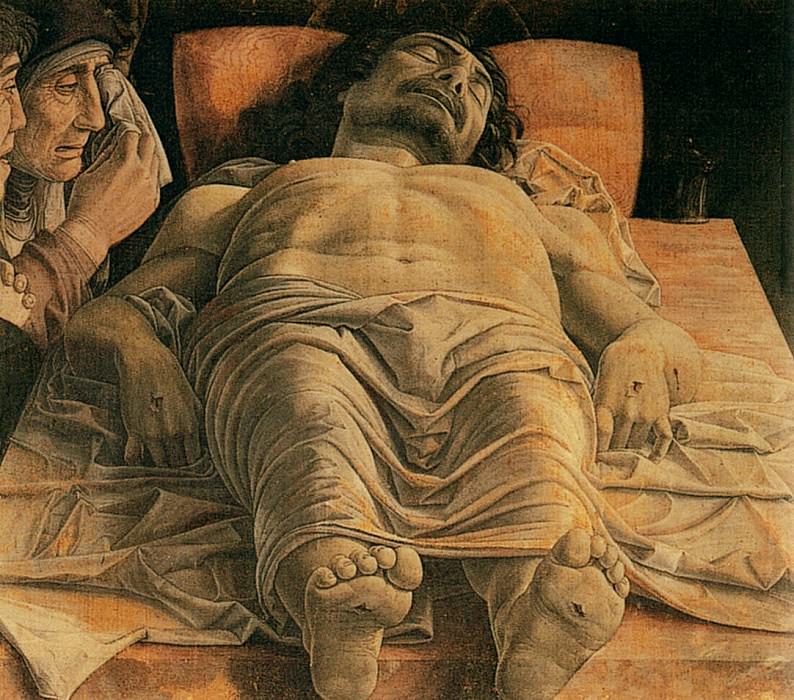The dead Christ Andrea Mantegna (1431-1506)
Andrea Mantegna – The dead Christ
Edit attribution
Download full size: 1082×954 px (0,3 Mb)
Painter: Andrea Mantegna
Italian Renaissance painter Andrea Mantegna painted original canvases that differed from the traditional classical works of the era in a harsh and rigid manner. "The Dead Christ," a mournful painting depicting the Gospel story of mourning for the crucified Jesus, is painted simply and easily. But the perspective here is markedly transformed. And the way in which the dead Son of God is presented to us is strikingly different from similar paintings by other artists. Mantegna was the first to place the body of Christ on the canvas lying feet first towards the audience.
Description of Andrea Mantegna’s The Dead Christ
Italian Renaissance painter Andrea Mantegna painted original canvases that differed from the traditional classical works of the era in a harsh and rigid manner.
"The Dead Christ," a mournful painting depicting the Gospel story of mourning for the crucified Jesus, is painted simply and easily. But the perspective here is markedly transformed. And the way in which the dead Son of God is presented to us is strikingly different from similar paintings by other artists.
Mantegna was the first to place the body of Christ on the canvas lying feet first towards the audience. His feet appear disproportionately small in comparison to his head. In this way the painter presented the law of perspective not as a callous, rigid requirement, but as a plastic quantity serving the ideas of a particular composition, and subject to the artist’s wishes.
Mantegna wanted to emphasize the Savior’s head, so he painted it larger. The expression on Jesus’ face is the compositional center: the face does not appear to be dead, but immersed in deep sleep. Allegorically, the belief in the resurrection is expressed.
The sobbing faces of John and Mary are painted very coarsely, wrinkled and bent with grief. Amazingly conveyed tragedy: looking at the painting "Dead Christ", you physically feel a lump in the throat and the oppressive pain in the soul.
Much attention the artist paid to drawing the folds of the white sheet covering the body. The entire color palette of the painting is characterized by restrained austerity. Christ’s body is full of majesty, and the stigmata on His limbs look frighteningly realistic. The atmosphere of the painting is mournful, but it anticipates a divine miracle soon.
Historians believe that the "Dead Christ" in the Milan gallery is one of the author’s many copies, while the original was lost. During his lifetime the artist treasured his work, keeping it at home.
Кому понравилось
Пожалуйста, подождите
На эту операцию может потребоваться несколько секунд.
Информация появится в новом окне,
если открытие новых окон не запрещено в настройках вашего браузера.
You need to login
Для работы с коллекциями – пожалуйста, войдите в аккаунт (open in new window).















You cannot comment Why?